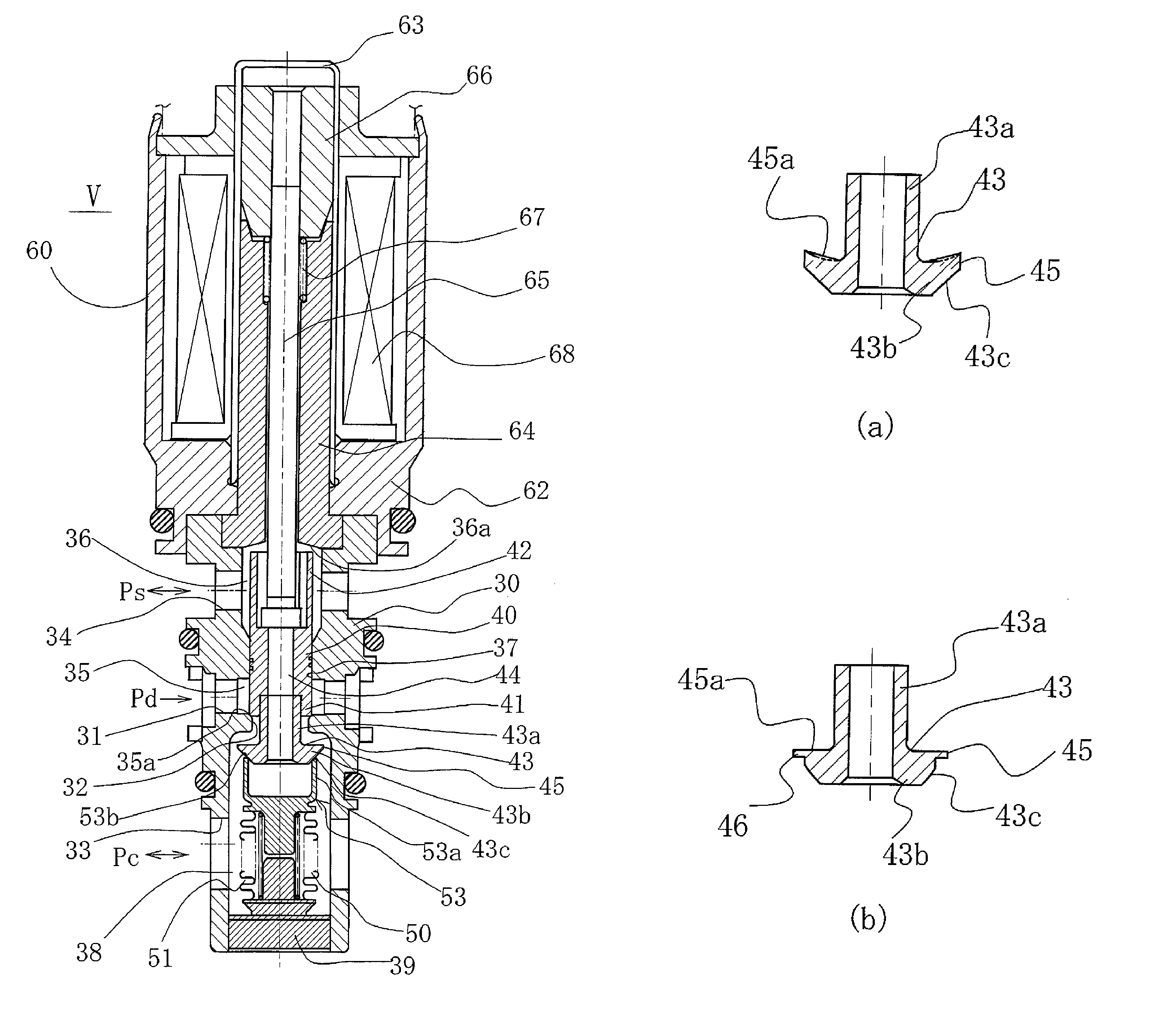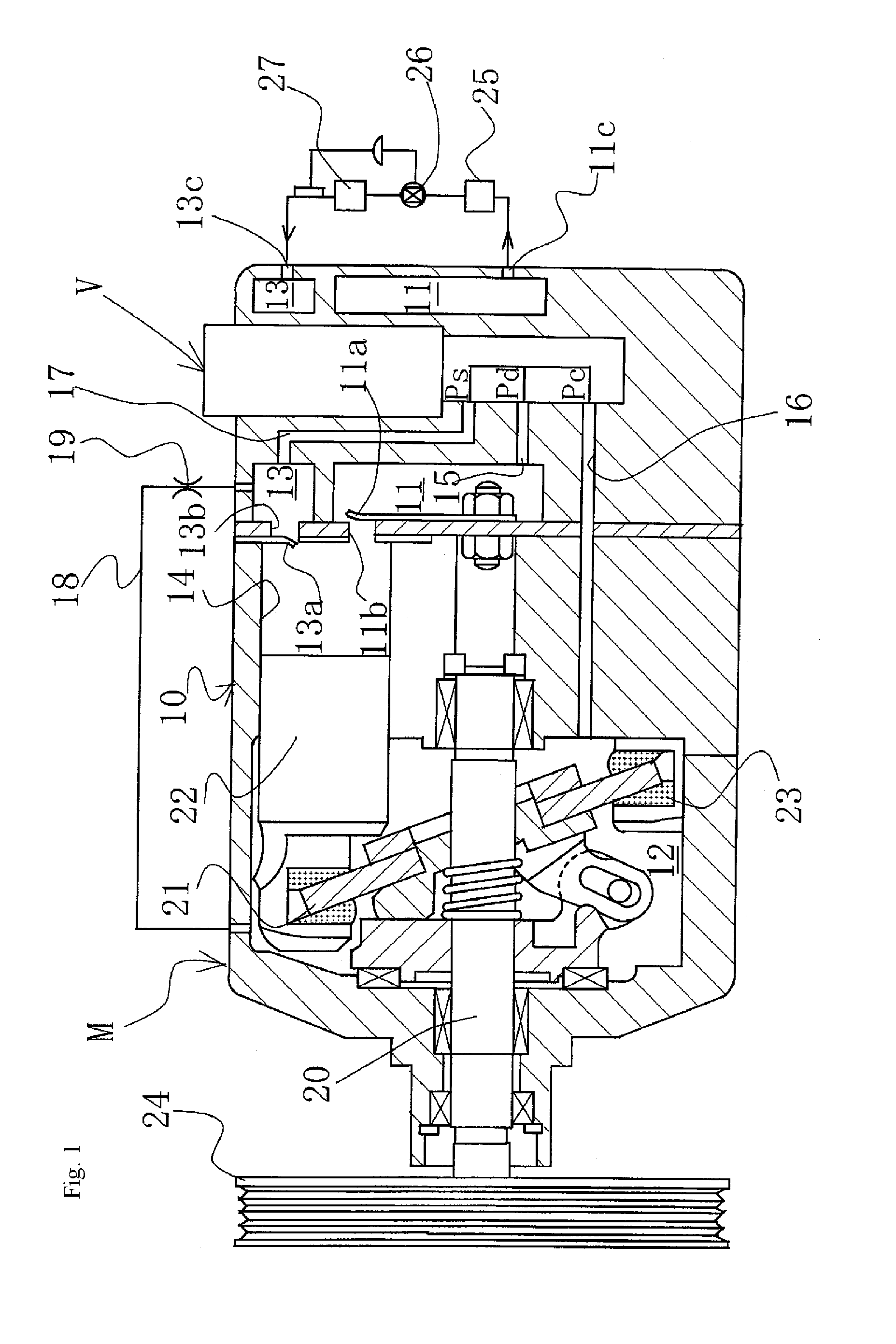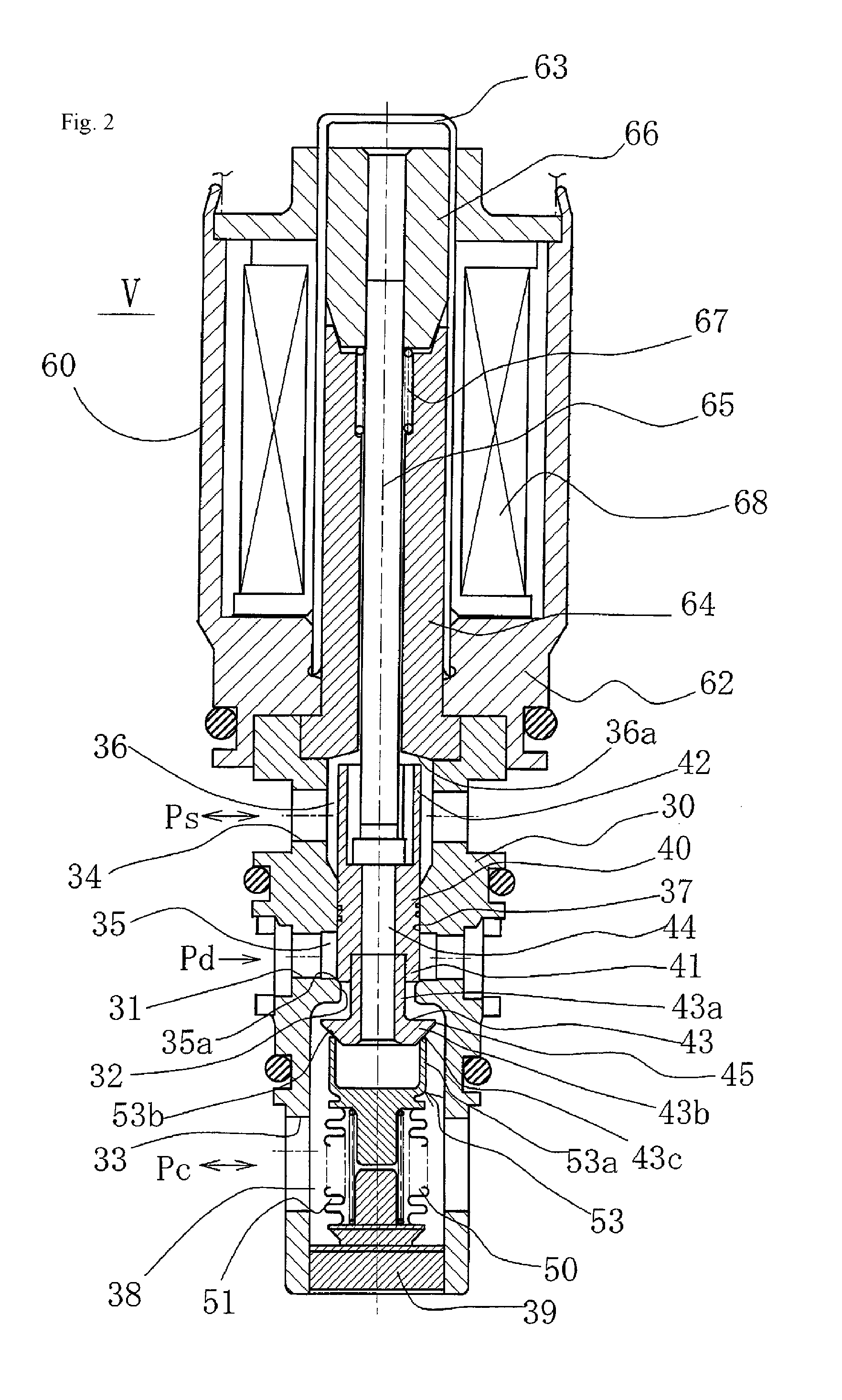Capacity control valve
a technology of capacitive control valve and valve body, which is applied in the direction of process and machine control, positive displacement liquid engine, instruments, etc., can solve the problems of torque fluctuation, affecting air conditioning control, and inability to control, so as to achieve stable action of the valve body, rapid increase in the amount of coolant flowing, and excessive increase in the sensitivity to a rise in pressure
- Summary
- Abstract
- Description
- Claims
- Application Information
AI Technical Summary
Benefits of technology
Problems solved by technology
Method used
Image
Examples
Embodiment Construction
[0038]An embodiment of the capacity control valve according to the present invention will now be described in detail with reference to the accompanying drawings. However, this is not provided by way of limitation to the interpretation of the present invention; a variety of modifications, amendments, and improvements based on the knowledge of a person skilled in the art are possible without departing from the scope of the present invention.
[0039]A swash plate variable capacity compressor M comprises, as shown in FIG. 1: a discharge chamber 11; a control chamber (also referred to as a crank chamber) 12; an intake chamber 13; a plurality of cylinders 14; a port 11b interconnecting the cylinders 14 and the discharge chamber 11, the port 11b being opened / closed by a discharge valve 11a; a port 13b interconnecting the cylinders 14 and the intake chamber 13, the port 13b being opened / closed by an intake valve 13a; a discharge port 11c and an intake port 13c connected to an external cooling...
PUM
 Login to View More
Login to View More Abstract
Description
Claims
Application Information
 Login to View More
Login to View More - R&D
- Intellectual Property
- Life Sciences
- Materials
- Tech Scout
- Unparalleled Data Quality
- Higher Quality Content
- 60% Fewer Hallucinations
Browse by: Latest US Patents, China's latest patents, Technical Efficacy Thesaurus, Application Domain, Technology Topic, Popular Technical Reports.
© 2025 PatSnap. All rights reserved.Legal|Privacy policy|Modern Slavery Act Transparency Statement|Sitemap|About US| Contact US: help@patsnap.com



